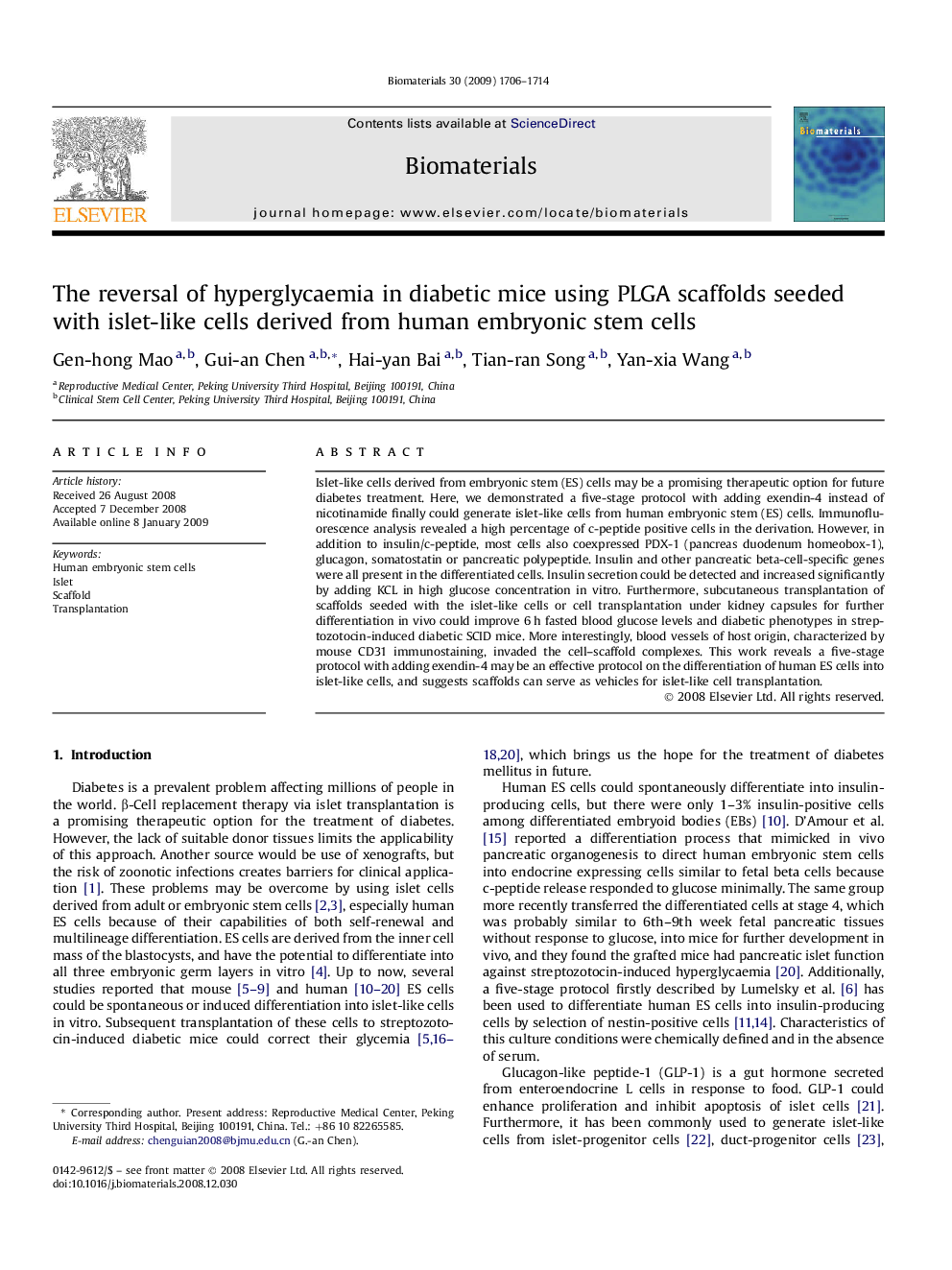| Article ID | Journal | Published Year | Pages | File Type |
|---|---|---|---|---|
| 10685 | Biomaterials | 2009 | 9 Pages |
Islet-like cells derived from embryonic stem (ES) cells may be a promising therapeutic option for future diabetes treatment. Here, we demonstrated a five-stage protocol with adding exendin-4 instead of nicotinamide finally could generate islet-like cells from human embryonic stem (ES) cells. Immunofluorescence analysis revealed a high percentage of c-peptide positive cells in the derivation. However, in addition to insulin/c-peptide, most cells also coexpressed PDX-1 (pancreas duodenum homeobox-1), glucagon, somatostatin or pancreatic polypeptide. Insulin and other pancreatic beta-cell-specific genes were all present in the differentiated cells. Insulin secretion could be detected and increased significantly by adding KCL in high glucose concentration in vitro. Furthermore, subcutaneous transplantation of scaffolds seeded with the islet-like cells or cell transplantation under kidney capsules for further differentiation in vivo could improve 6 h fasted blood glucose levels and diabetic phenotypes in streptozotocin-induced diabetic SCID mice. More interestingly, blood vessels of host origin, characterized by mouse CD31 immunostaining, invaded the cell–scaffold complexes. This work reveals a five-stage protocol with adding exendin-4 may be an effective protocol on the differentiation of human ES cells into islet-like cells, and suggests scaffolds can serve as vehicles for islet-like cell transplantation.
